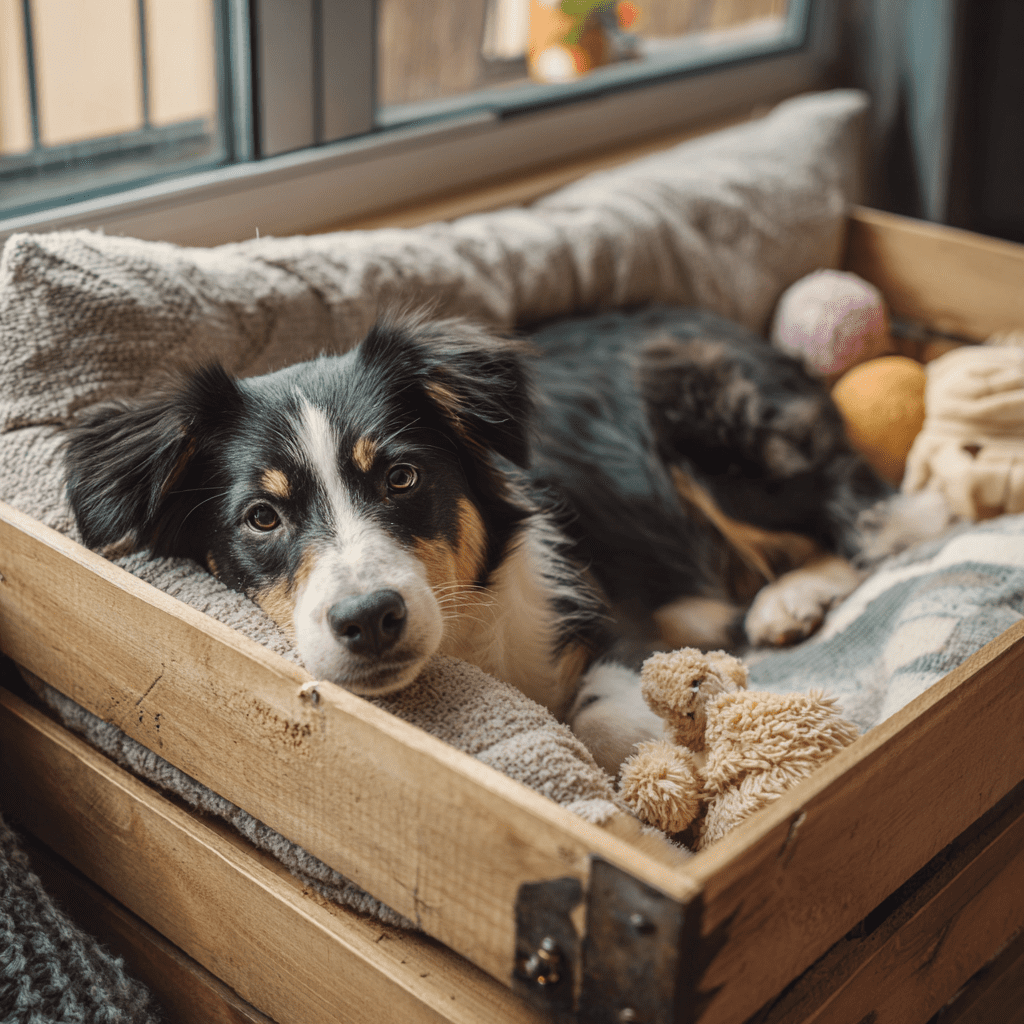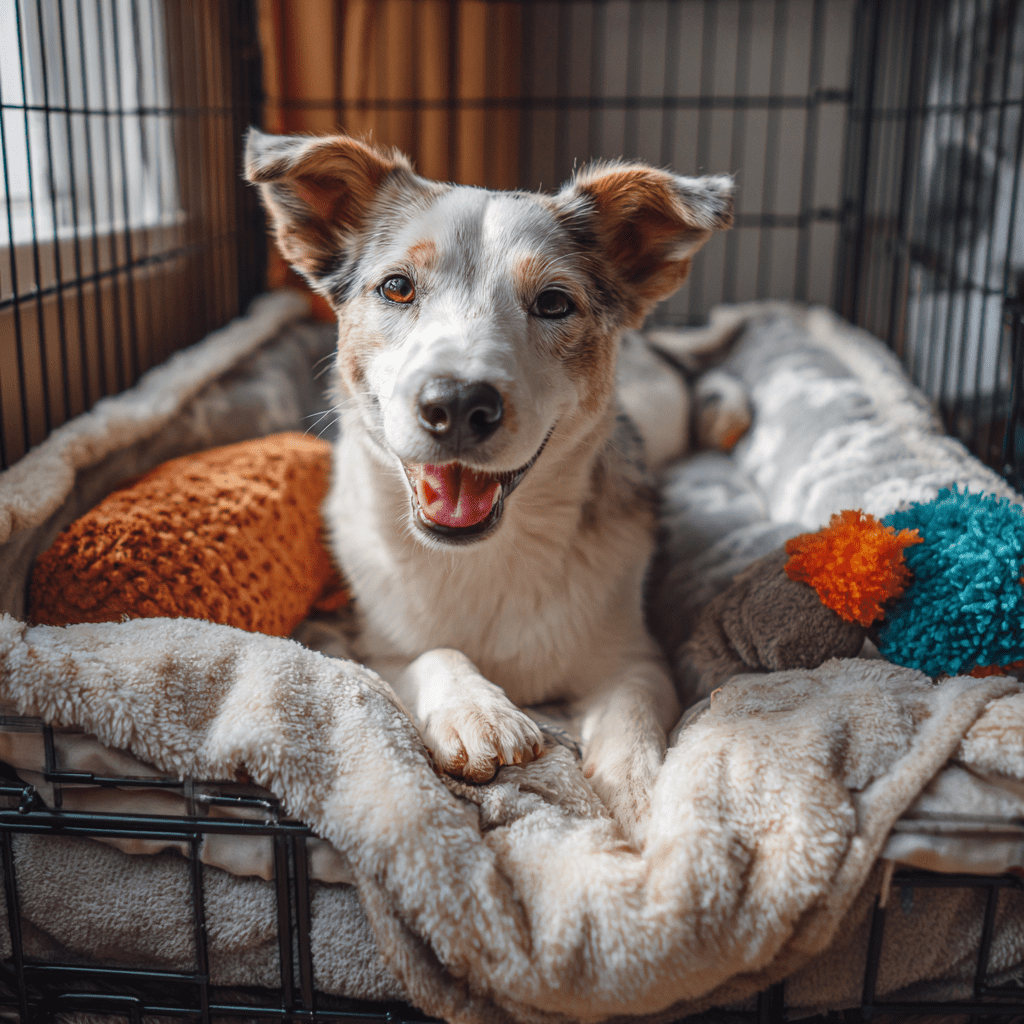Introduction: Why Crate Training Matters
Crate training often sparks mixed feelings among dog owners. Some worry it feels like “locking up” their pet, while others swear it’s the best training tool they’ve ever used. The truth lies in how you introduce the crate. When done right, crate training isn’t punishment—it’s about creating a safe, cozy den where your dog feels secure and comfortable.
Dogs naturally crave a space of their own. A properly introduced crate can:
- Provide a safe environment when you’re not home.
- Speed up housebreaking.
- Prevent destructive behaviors.
- Offer a calm retreat for your dog during stressful situations.
In this guide, we’ll explore how to crate train your dog without stress, using patience, consistency, and positive reinforcement.
Step 1: Choose the Right Crate
The foundation of stress-free crate training is picking the right size and type of crate.
- Size matters: Your dog should be able to stand, turn around, and lie down comfortably. Avoid oversized crates for puppies, as they may use one side for sleeping and the other as a bathroom.
- Types of crates:
- Wire crates: Provide ventilation and visibility.
- Plastic crates: Cozy, den-like feel.
- Soft-sided crates: Best for calm, travel-friendly dogs.
Tip: Add soft bedding, a blanket, or your dog’s favorite toy to make it inviting.
Step 2: Introduce the Crate Slowly
Never force your dog into the crate. The introduction should be gradual and positive.
- Open-door policy: Leave the door open and let your dog explore at their own pace.
- Use treats: Toss a treat inside the crate, and praise your dog for going in.
- Feed meals inside: Serving food in the crate builds a strong, happy association.
The goal is for your dog to see the crate as a rewarding place, not a scary one.
Step 3: Build Positive Associations

Crates become less stressful when they’re linked with good things.
- Place favorite chew toys or stuffed Kongs inside.
- Use praise and rewards whenever your dog voluntarily enters.
- Never use the crate as punishment.
If the crate is consistently connected with comfort, your dog will naturally seek it out.
Step 4: Practice Short Sessions
Start crate training in short increments.
- Encourage your dog to enter with a treat.
- Close the door briefly (just a few seconds at first).
- Open the door before they get anxious.
- Gradually increase the duration—30 seconds, then a minute, then five minutes.
Patience is key. Forcing long sessions too soon creates stress and resistance.
Step 5: Extend Time and Add Distance
Once your dog is comfortable staying in the crate for a few minutes, begin leaving the room.
- Step away for short periods.
- Increase the time gradually.
- Mix short and long sessions so your dog doesn’t anticipate a set routine.
With practice, your dog will learn that you always return.
Step 6: Use the Crate at Night and When You’re Away
Nighttime crate training helps puppies feel secure and reduces nighttime accidents. Place the crate near your bed at first so your dog doesn’t feel isolated.
When leaving the house:
- Only crate your dog after exercise and potty breaks.
- Keep departures calm—no long goodbyes.
- Provide a chew toy to keep them occupied.
Step 7: Prevent Stress and Separation Anxiety
Crate training should never feel like abandonment. Watch for signs of stress such as whining, pawing, or barking.
Tips to reduce stress:
- Exercise your dog before crating.
- Leave calming music or a white noise machine on.
- Avoid crating for excessively long hours (puppies = 1 hour per month of age, adults = max 4–6 hours).
If anxiety persists, consider working with a trainer or using gradual desensitization techniques.
Common Mistakes to Avoid
- Forcing your dog inside: Creates fear and resistance.
- Using the crate as punishment: Turns it into a negative space.
- Leaving dogs too long: Leads to accidents and stress.
- Inconsistency: Confuses your dog and slows progress.
Real-Life Story: Bella’s Crate Journey
Bella, a rescue beagle, initially panicked at the sight of a crate. Her new owner introduced the crate slowly, using peanut butter-stuffed Kongs and feeding meals inside. Within weeks, Bella began entering the crate on her own whenever she needed rest. Today, it’s her safe space—proof that gentle, positive training builds trust and comfort.
The Benefits of Stress-Free Crate Training
Done properly, crate training benefits both dogs and owners:
- For dogs: Provides comfort, safety, and a personal retreat.
- For owners: Prevents accidents, protects the home, and aids in smoother travel.
It’s not about confinement—it’s about security and trust.
Conclusion: A Safe Haven, Not a Cage
Crate training doesn’t have to be stressful. By choosing the right crate, introducing it positively, and building rewarding associations, your dog will come to love their special space.
Patience, kindness, and consistency are the cornerstones of success. Remember: the crate should always be a safe haven, never a prison. With the right approach, you’ll create a stress-free environment where your dog feels calm, happy, and secure.
